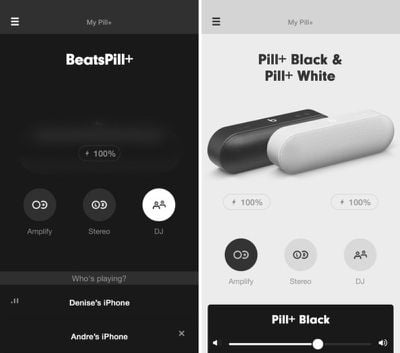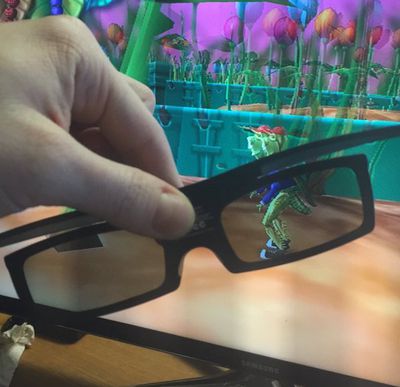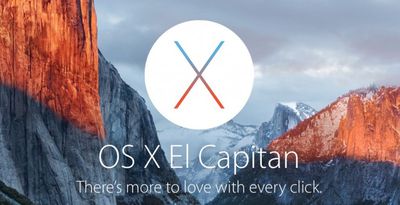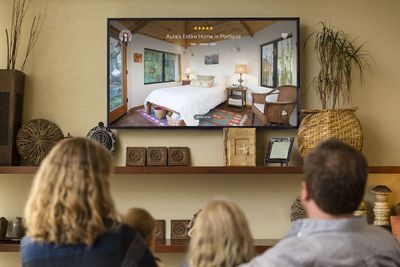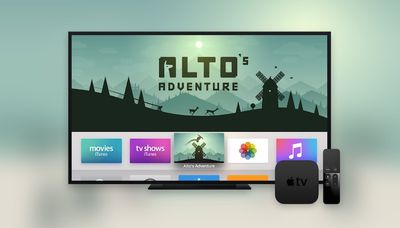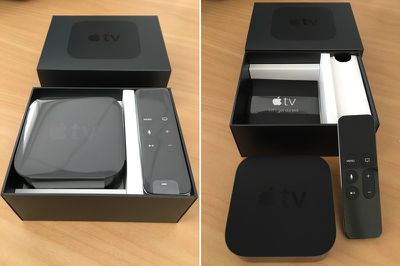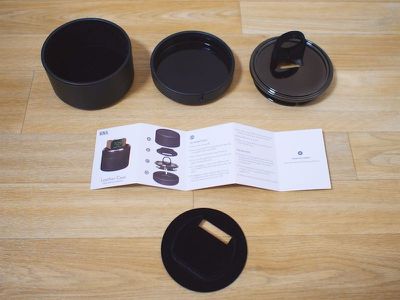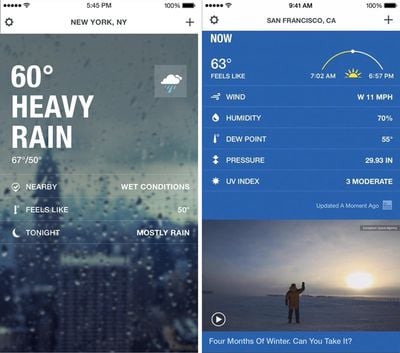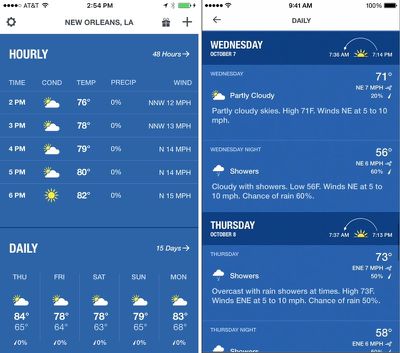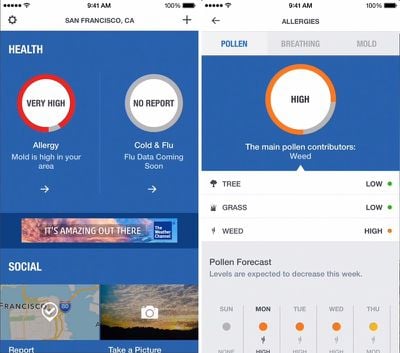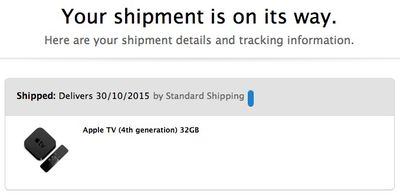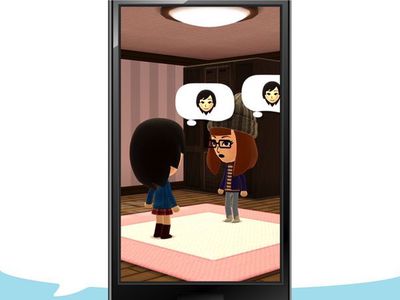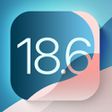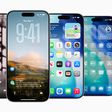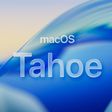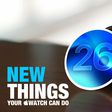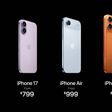With the launch of the new fourth-generation Apple TV just a couple days away on Friday, October 30, the first batch of reviews for the new set-top box have arrived online. Most sites have come away with positive impressions of the new Apple TV, noting that Siri is extraordinary helpful and the inclusion of tvOS and apps give the device a lot of potential for the future.
BuzzFeed says that the biggest new feature on the Apple TV, the new Siri Remote, is a "drastic" improvement over the remote included with previous Apple TV remotes. The touchpad is "surprisingly accurate and easy" to use for pinpointing certain moments during a film or TV show. The universal search via Siri, however, will have longtime Apple TV users "resenting Apple for not enabling it sooner." Siri, according to
BuzzFeed, is both useful and clever.
“Rewind 30 seconds,” “Show me Anchorman,” and “Who directed this?” all work well. And thanks to “What did he say?” — which skips back to replay a character’s comment with closed captioning, I finally know what Benicio Del Toro’s character was mumbling in The Usual Suspects. (“I said he’ll flip you. …Flip you. Flip ya for real.” Kind of a letdown. Don’t even get me started on Lost in Translation.) Also: For a few glorious moments last night I was able to taunt my wife by repeatedly what-did-he-saying a favorite moment in Blue Velvet.
While The Verge also enjoyed Siri on the Apple TV, saying that the execution is "among the best in the game," they noted that there are several limitations in place. Siri only works with a handful of apps at the moment, including Netflix, iTunes, Hulu, HBO and Showtime. However, The Verge does mention that a Siri search API is on the way.
On apps, The Verge says that most tvOS apps are currently just very large iPhone apps. There are few apps that take advantage of TV, though they do note that apps like the QVC app show the potential of the new Apple TV and tvOS.
The QVC app is the only app that really and truly blends television with interactivity: it shows you a live feed of QVC, and it overlays the familiar information box on the left side of the screen with a buy button. So you’re watching the regular QVC TV channel, and you can just click to buy, or swipe down to see more photos of the item and related items while the video keeps playing.
Mashable notes that setting up the Apple TV is extremely simple and easy if the user has an iPhone with iOS 9.1 installed.
Simply plug the Apple TV into HDMI and power and then use the Bluetooth connection from your iPhone or iPad to share information such as iCloud and iTunes Account preferences and your WiFi password.
However, Yahoo Tech says that while Siri and the new setup process make things simpler, users will still have plenty of text entry to do on the new device. Users still have to enter their user information in certain apps that require authentication, like Hulu or HBO Go. Unfortunately, Yahoo Tech's David Pogue says that the new on-screen keyboard is far more difficult and "excruciating" to use than the previous on-screen keyboard.
Finally, BuzzFeed mentions that the new Apple TV accessory, the Remote Loop, which is intended to keep the new remote from flying out of the hands of new Apple TV users who want to play games, is better used in another way.
But frankly, the loop is better used as a means of locating and rescuing the diminutive remote after it’s gone missing between couch cushions. I’ve used it for this purpose at least three times so far, and given the loop’s utility for this sort of thing, it’s puzzling that Apple doesn’t view it as a crucial part of the remote, instead selling it as a silly $13 accessory.
The new fourth-generation Apple TV is available for pre-order now and will be available in Apple Stores this Friday. It's available for $149 for a 32 GB version and $199 for a 64 GB version.
Other reviews: CNET, USA Today, Re/code, The Wall Street Journal.
![]() As of today, Apple has stopped signing iOS 9.0.2 for compatible iPhone, iPad, and iPod touch models, meaning users can no longer upgrade or downgrade to that version of iOS using iTunes. Apple is now signing iOS 9.1 and later only.
As of today, Apple has stopped signing iOS 9.0.2 for compatible iPhone, iPad, and iPod touch models, meaning users can no longer upgrade or downgrade to that version of iOS using iTunes. Apple is now signing iOS 9.1 and later only.

